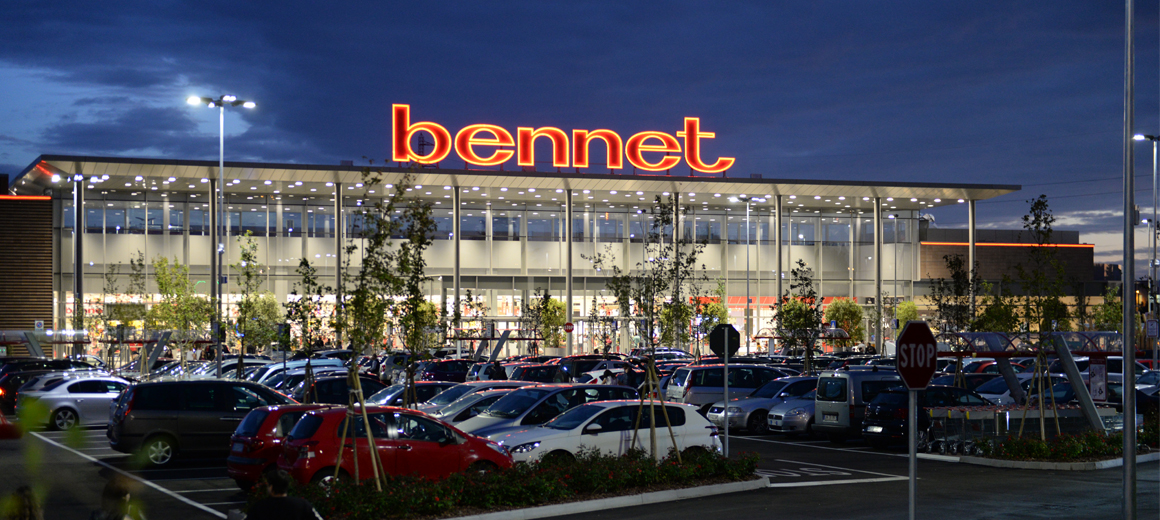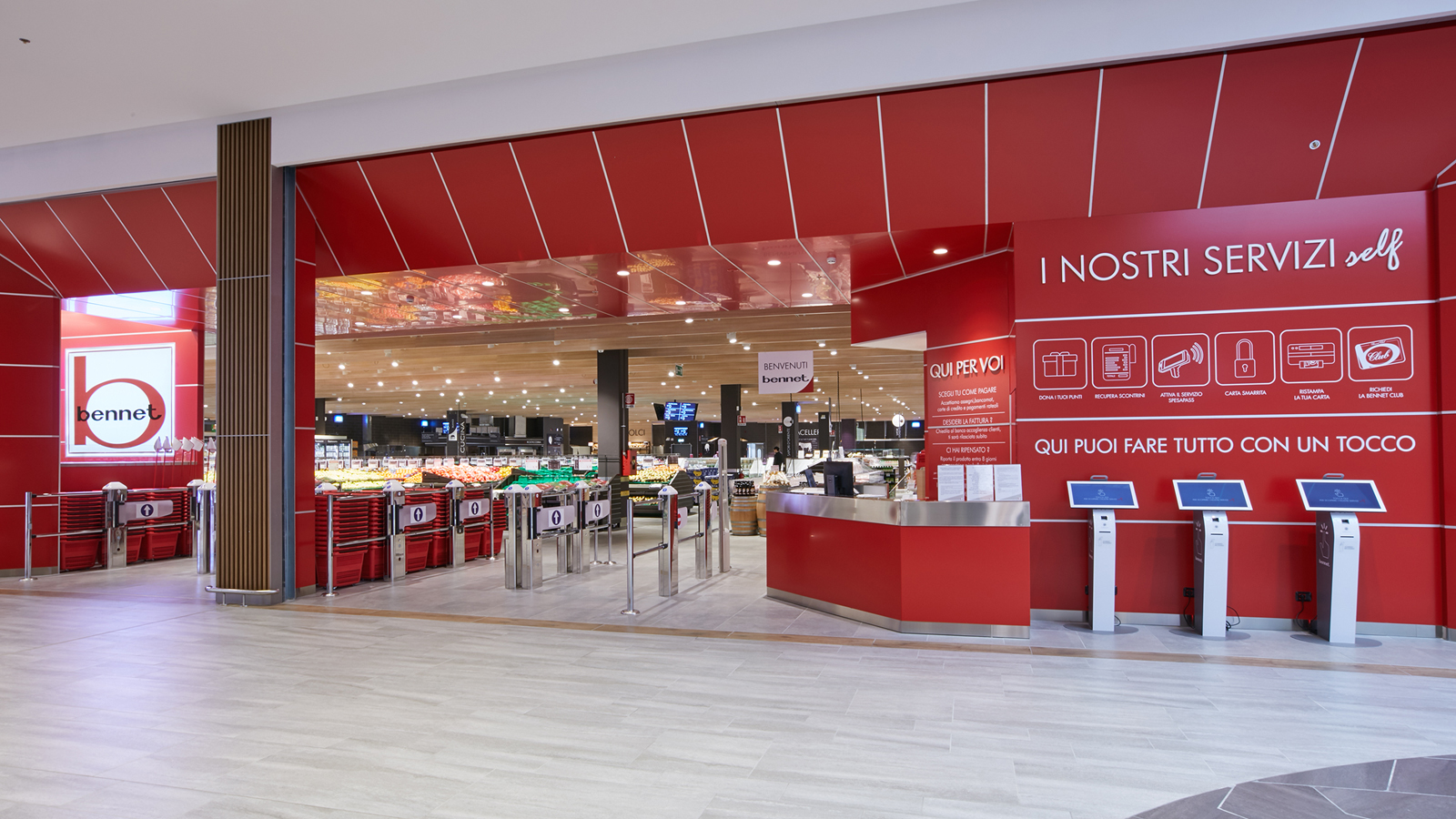

PC-based control and DALI-2 in building automation
Whether it’s in a showroom, on a display, or on sales shelves, lighting makes all the difference. The Italian department store group Bennet SpA has extensive experience in this field and is gradually equipping its 73 stores and 45 shopping centers with modern building automation. Established system integrator INTEREL Trading uses PC-based control from Beckhoff and DALI-2 to meet the operator’s requirements for flexible designs to create different lighting environments and high energy efficiency.
The retail business is known for continuously adding new items and restructuring the existing product range. As a result, the entire building automation system needs to be both flexible and modular. INTEREL’s solutions fulfill this need with a robust, decentralized I/O distribution system with its own dedicated protocol called Intermod, which networks multiple control panels in different shopping centers. The control panels are used to record signals from devices, such as the uninterruptible power supplies or burglar alarms, and control a wide variety of actuators and loads.

Beckhoff’s distributed control intelligence plays a crucial role in INTEREL’s open, cross-platform automation philosophy. The TwinCAT 3 software platform’s versatile nature helps specialists to implement a wide variety of projects. What’s more, the broad range of supported interfaces plays an equally important role, for example in expanding and modernizing the Intermod automation stations. This is where CX8180 Embedded PCs with an RS232/RS485 interface come into play. Due to their E-bus/K-bus interface connection, specialists have access to the complete range of Beckhoff I/Os, including the EL2xxx series EtherCAT Terminals for direct control of LEDs or communication interfaces – ranging from BACnet to DALI-2 and KNX – commonly used in building automation.
Flexibility goes hand in hand with openness
Featuring an ARM Cortex™-A9 CPU (800 MHz), the CX8180 Embedded PCs provide sufficient computing power for processing the logic section. In addition to the KL1408 (8-channel digital input) and KL2408 (8-channel digital output) Bus Terminals, the system integrator primarily uses the KL6821 1-channel communication interface. This DALI/DALI-2 master enables up to 64 DALI/DALI-2 slaves and 64 DALI-2 input devices to be controlled or read in. Using this configuration, each Bennet store is able to operate an average of 1000 to 1500 lights.
What’s more, INTEREL’s strategy uses standard protocols between the SCADA/HMI units and field controllers which allows them to maintain a unified management and application philosophy, without having to integrate special communication methods. Established drivers such as Modbus TCP/RTU, MQTT, or OPC UA are used to communicate with the control center, while TwinCAT ADS is used between the automation station and the control. The advantage of this configuration is that the tags generated by the control application are automatically adopted by the control center’s communication driver.
The lighting controllers of the shopping center are distributed among several PLCs with master functions, which other PLCs are connected to as independently operating slaves. This structure and the multiprotocol-capable CX8180 Embedded PCs enable INTEREL to optimally meet the individual requirements of each site and its existing infrastructure. This is because the required communication protocol can be installed on the embedded PCs as required.

Energy savings of up to 92.5%
The Bennet sites saw the greatest increase in efficiency by converting the lighting controllers to the DALI-2 bus. Savings have been made in terms of cabling and control components during installation and beyond. Light and occupancy sensors enable corrections to be integrated into the controller logic and support efficient lighting of the retail premises. What’s more, intelligent lighting controllers allow for more freedom – something Bennet has quickly adopted to create individual lighting environments tailored to the type of products presented, customer traffic, and the shop floor design.
Dynamic dimming and LED lighting improve the lighting quality while also dramatically reducing electricity consumption and CO2 emissions. In some warehouses, the switch from T8 fluorescent lamps to LED lamps alone has already resulted in energy savings of 43.5%. Combined with intelligent lighting automation, the savings were as high as 92.5%.
However, engineering and operation were not the only areas to benefit – maintenance and servicing saw positive effects as well. The control centers permanently monitor the status of each light spot, detecting the status (switched on or off) or type of fault (driver failure, lamp failure) in real time and alerting the right employees for the task at hand. This means that the maintenance technicians are already aware of the measures and spare parts needed on-site to carry out repair before the alarm is raised by the sales staff.
This open feature of PC-based control makes it possible to implement new automation philosophies as needed without having to change the installed hardware. Current technology trends focus on the interoperability between platforms and integration of secure communication protocols to protect against cyber attacks. The ability to handle IoT protocols such as MQTT and OPC UA and security standards such as TLS 1.2 means that both of the above requirements are already integrated into Beckhoff’s TwinCAT 3 platform.